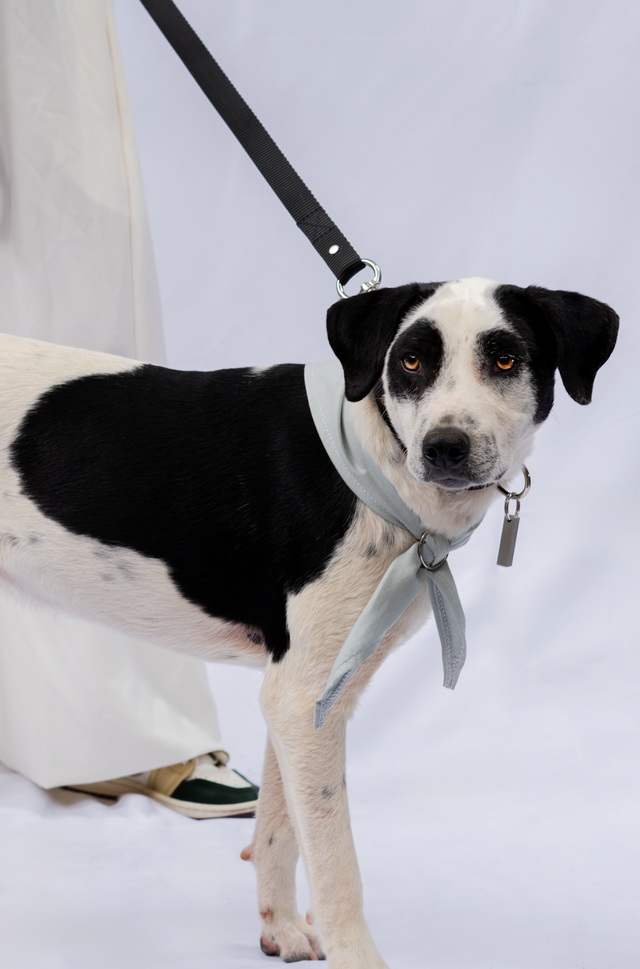Tips for caring for our pets in the heat
Seasonal changes and hot weather affect our dogs and cats as much as they do us. If we suffer from high temperatures, let's not forget that animals can also suffer badly , even running health risks if we don't protect them properly, at home or during walks.
Find out below how to care for your pets when the temperature rises , what are the most effective measures to keep them cool , and how to recognize dehydration and heat stroke.
At home
Keeping an animal warm in a house or apartment depends a lot on its characteristics. Some locations are warmer than others , it depends on the orientation , the insulation of the walls, doors and windows, the presence of curtains or blinds . Whatever your house is like, in hot seasons, try to maintain a temperate temperature so that your cat or dog does not suffer too much from the heat, get dehydrated or worse, suffer heat stroke. Create air currents between two windows, ventilate during the night until 10 in the morning , keep the curtains closed during the hottest hours , are simple techniques to avoid suffering too much from the heat.
Hydration is very important when temperatures rise. Make sure your cat or dog has access to enough water , changing it regularly to prevent it from overheating. Making ice cream with natural yogurt, water and watermelon (with the seeds removed) also has the advantage of cooling and keeping a dog busy . It may be useful to take your dog out for another walk a day if it drinks a lot more water than usual.
If the heat gets too extreme , one option is to place a fan near your pet's bed , or where he usually hangs out in the house - he may find his bed too hot and prefer to sleep on the floor to cool off. Cooling mats are available that can help lower his temperature . To relieve your dog or cat's discomfort, you can brush or clip his hair, but don't shave it because the undercoat of fur helps protect him from sunburn and acts as thermal insulation.

Outside the house
Dogs need to go out every day to expend their energy and relieve themselves , which poses more problems when temperatures are extreme. Try to adapt your walking schedule to avoid the hottest hours of the day when there is the most sunlight, between 10 a.m. and 4 p.m. Be careful with the pavement, which can get very hot and burn the pads of their paws. Touching the ground with your hand or foot for a few seconds will be enough to tell: if it burns you, it will burn your dog too . When you go out during the day, try to stay in the shade as much as possible and avoid direct sunlight. If you have a xoloitzcuintle or a hairless dog, avoid prolonged exposure to the sun and use a suitable sunscreen .
If you play ball or Frisbee with your pet, choose wooded areas with a dirt floor or dog parks with tezontle grass and avoid letting your dog exercise too much in the heat.
Cars heat up very quickly, even if you roll down the windows, and even in the shade. You can't leave your dog alone inside for more than a couple of minutes without putting him at risk . For example, if the ambient temperature is 80 degrees, the inside of a car can reach 140 degrees in just 15 minutes.
During each walk , take water and a bowl or bottle to keep your pet hydrated. If you're going for a walk in nature, look for bodies of water to cool off in. If your dog really likes to swim , there are also specialized canine centers with aquatic activities , such as Nico's Animal Care , located in Cuajimalpa. You can take your dog for a day or leave him at the hotel, where he will enjoy the pool.

Recognizing the symptoms of dehydration and heat stroke
Dehydration and heat stroke are a risk for dogs and cats in hot weather. The flat snout of brachycephalic breeds such as pugs, English and French bulldogs, as well as boxers is an aggravating factor . In fact, their respiratory system makes them more susceptible to high temperatures, so you should be even more careful with your pet if it has this characteristic.
Now, how do I know if my cat or dog is dehydrated? A dehydrated animal has a dry mouth and nose, pale gums , a lethargic attitude , a distant look , and panting abnormally . When it comes to heat stroke , a much more serious problem, panting leads to difficulty breathing, increased weakness, and abnormal salivation . In the most severe cases, nausea , diarrhea , loss of consciousness, and seizures occur. The internal temperature can reach 40-42 instead of 37-39.
If your pet is showing signs of discomfort and you suspect it may be heat-related, move it to a cooler, more ventilated area , wet it with cold water or a damp cloth , insisting on the head and back. Also try to give it water to drink. If it does not react and remains unconscious, you should go to a veterinary clinic as soon as possible.

Both hot and cold weather require certain care so that our animals do not run health risks, can maintain a healthy body temperature, and live their best life. Now you know how to walk your dog with his seasonal bandana and EPIC look in complete safety: before 10 in the morning or after 4 in the afternoon, with water to hydrate him and monitoring the temperature of the sidewalk.



1 Comment
¿Cuáles son las mejores prácticas para cuidar a tus mascotas durante las épocas de calor, y cómo puedes reconocer los signos de deshidratación o golpe de calor en perros y gatos? Regards Tel U